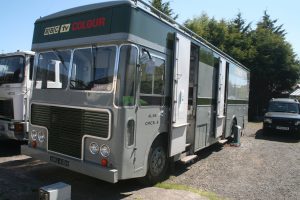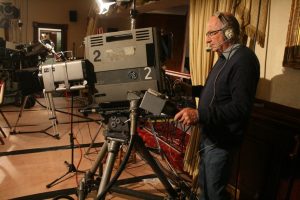ADAPT (Adoption of New Technological Arrays in the Production of Broadcast Television) was a five-year (2013-2018) research project, funded by the European Research Council and based at Royal Holloway, University of London. The project aimed to research and document the history of British broadcast television technology between 1960 and the near-present.
Television has seen vast technological changes since 1960. In 1960, the revolutionary technologies were two-inch videotape and 16mm film with synched tape-recorded sound. Tape and film editing gave way to non-linear post-production in the 1990s. Now we have tapeless production in high definition and the involvement of social media.
All these changes have affected what has appeared on the screen. It also affected the lives of skilled technicians, who sometimes had to adapt to new ways of working, and just as often took a hand in adapting the available equipment to their specific needs.
As well as publishing written accounts, ADAPT draws together the threads of this complex story by carrying out reconstructions that reunite retired equipment with the people who used to use it. ADAPT uses the latest technologies (including fixed rig shooting) to film veteran television crews from the 1960s onwards as they work again with the old kit that they once used routinely.
These innovative reconstructions range from live work with film cameras, sound recording and editing equipment to an ambitious project to recreate a 1970s outside broadcast, using an authentic OB truck operated by a team of ‘veteran’ crew members. Through these simulations, the project attempts to demonstrate how and why the TV programmes of the past were made, and why they are as they are. Participants in these reconstructions also explain how each machine worked and how different machines worked together as an ‘array’; how they adapted the machines; and how they worked together as teams within the overall production process.
A selection of this material can be found on the project’s website, the ADAPT You Tube Channel and can be downloaded under a Creative Commons licence from the Figshare research library. They will soon be added to the Europeana digital library.
ADAPT has also produced several research publications. In particular, the edited collection of essays ‘Hands on Media History’ (Routledge 2020) (from the international conference ‘Hands on History: Exploring New Methodologies for Media History Research’) can be downloaded here

